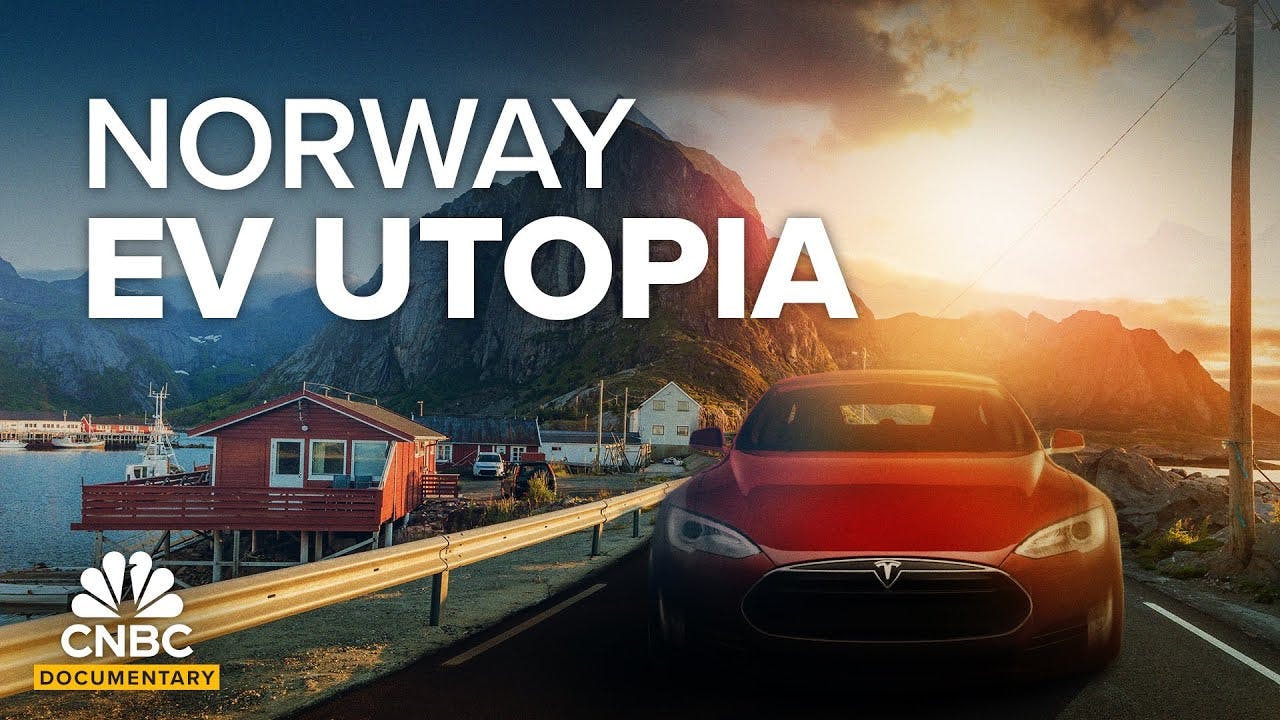How Norway Built An EV Utopia While The U.S. Is Struggling To Go Electric | CNBC Documentary
()

Norway's EV Adoption
- Norway has the highest EV adoption rate globally, with over 82% of new car sales being electric in 2023.
- Oslo, the capital, is electrifying its public transportation, aiming for zero emissions by the end of 2023.
- Norway's EV adoption is driven by policies like zero registration and value-added taxes, discounts, and access to bus lanes.
- The country's abundant hydropower resources make electric cars more affordable due to cheap and renewable electricity.
- Despite the success, unintended consequences include increased cars on the road and a shift away from public transportation.
- Norway's EV adoption is funded through public spending, with approximately $4 billion annually on incentives.
- Norway's wealth from oil and gas has enabled significant investment in EV infrastructure and incentives.
Norway's Energy Transition
- Norway aims for a 55% reduction in emissions by 2030, aligning with the European Union's goal.
- The oil industry in Norway is transitioning to new energy sources, focusing on wind production on the Norwegian continental shelf.
- Freyr, a battery company, is building factories in Norway and the US to contribute to the energy transition.
- Norway's wealth from oil has been wisely invested, with Norges Bank Investment Management owning 2% of most companies globally.
Charging Infrastructure in Norway
- Charging infrastructure in Norway has been subsidized, especially in rural areas, to encourage its development.
- Companies like Mer Norway, Tesla, and Recharge have played significant roles in installing fast chargers throughout the country.
- Partnerships with retailers like McDonald's and Ikea provide charging stations, creating new business opportunities.
- The cost of building charging stations varies depending on factors like the number of charging points and power requirements.
- Recharge, a charging company, is investing heavily in infrastructure and expects to become profitable in the future.
- Oslo has been a leader in EV infrastructure, installing public chargers, converting city buses to electric, and electrifying construction machinery and semi-trucks.
- Oslo's public transportation is entirely zero-emission, with electric ferries charging quickly using hydropower.
Challenges and Considerations
- Norway is considering rolling back some of the incentives for electric vehicles (EVs) as they become more mainstream and affordable.
- There have been concerns about increased wear and tear on the roads due to the heavier weight of EVs, and discussions about whether they should pay their fair share of taxes.
- Battery recycling is an important aspect of EV adoption, and there are common EU regulations for recycling batteries.
- Charging infrastructure in the US, Europe, and Norway needs improvement to make EV travel more convenient and reliable.
- Standardization of charging technology is important for the industry and users.
- Mistakes have been made in the process of EV adoption, but it's important to learn from them and continue innovating.